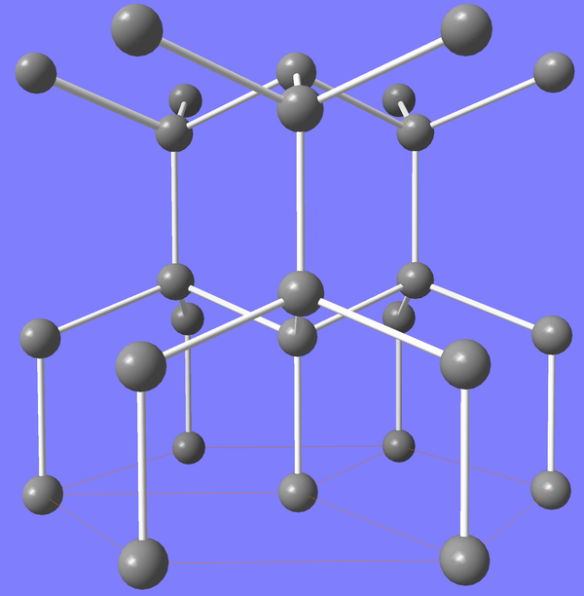Kathleen Lonsdale and her mineral
What does it look like?

Crystal structure of lonsdaleite (hexagonal diamond) by Materialscientist
What is it?
Today is the birthday of one of the pioneers of crystallography, Kathleen Lonsdale (1903 to 1971). Born in Ireland, she studied under W. H. Bragg at the Royal Institution and determined a number of fundamental structures – including the first determination of a molecular structure, hexamethylbenzene.
She was also very interested in the forms different form carbon and how diamonds could be synthesised, writing this review of the topic in Nature. As a result, Lonsdaleite, which is another form of carbon discovered in 1967, was named after her. Otherwise known as hexagonal diamond, Lonsdaleite, is very rare an only found naturally in meteorites. It can be made in the laboratory, but only by subjecting carbon (in the form of graphite) to extreme high temperatures, and shock pressures – often with explosives.
There has been excitement that Lonsdaleite and a material that is structured (Wurtzite boron nitride) like it, could be tougher than the 'normal' diamond. But although both Lonsdaleite and Wurtzite boron nitride are found naturally and can be made in the lab – we still haven't made enough of them to test if they are stronger than diamond. A challenge for future scientists?
Where did the structure come from?
The structure of Lonsdaleite was first reported by Bundy and Kasper in 1967, its structure is available on the American Mineralogical Database.






